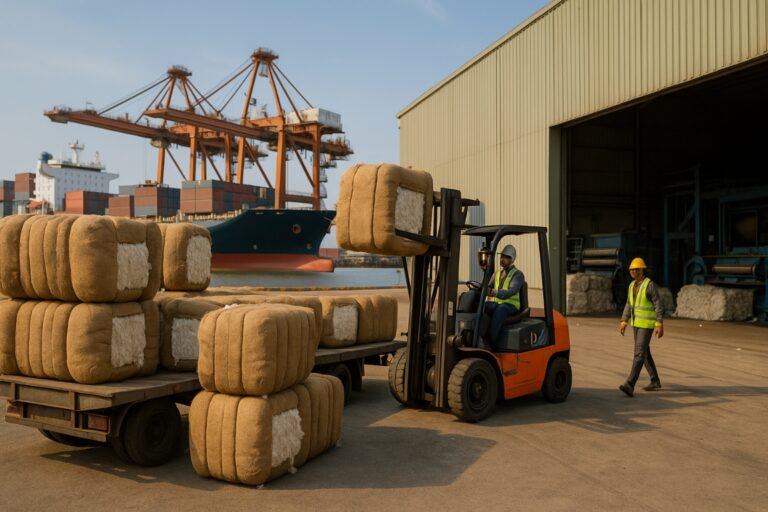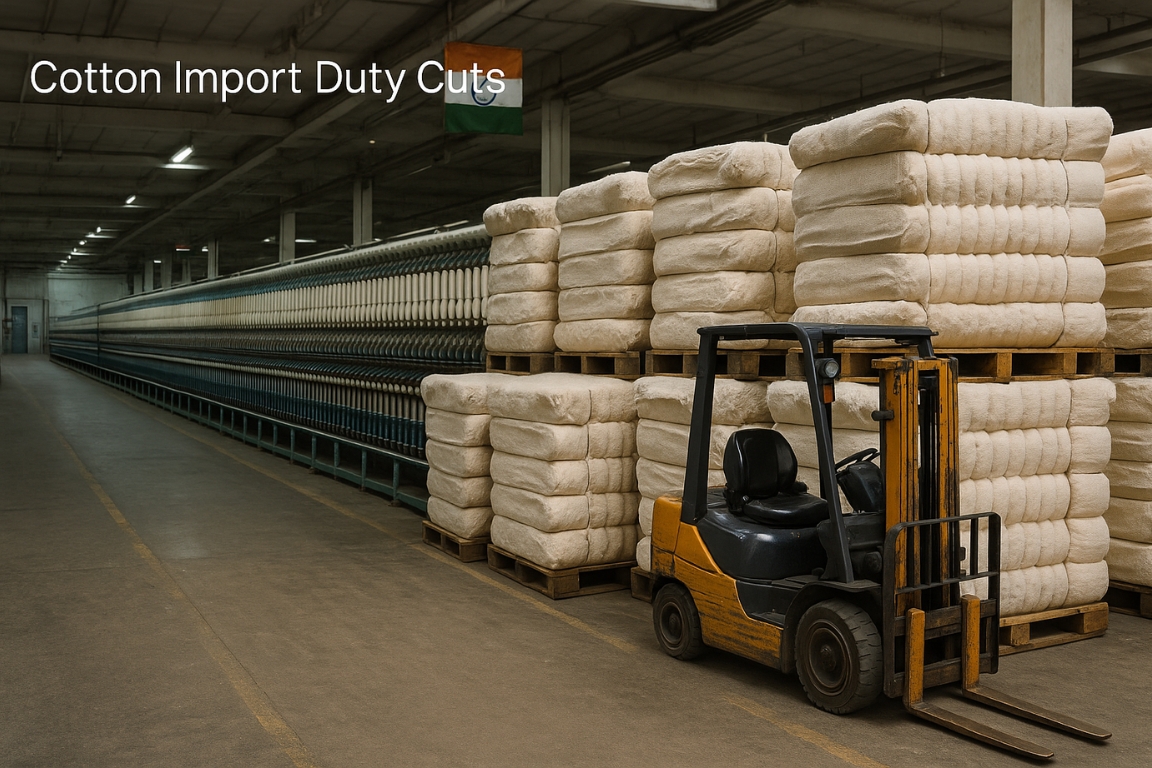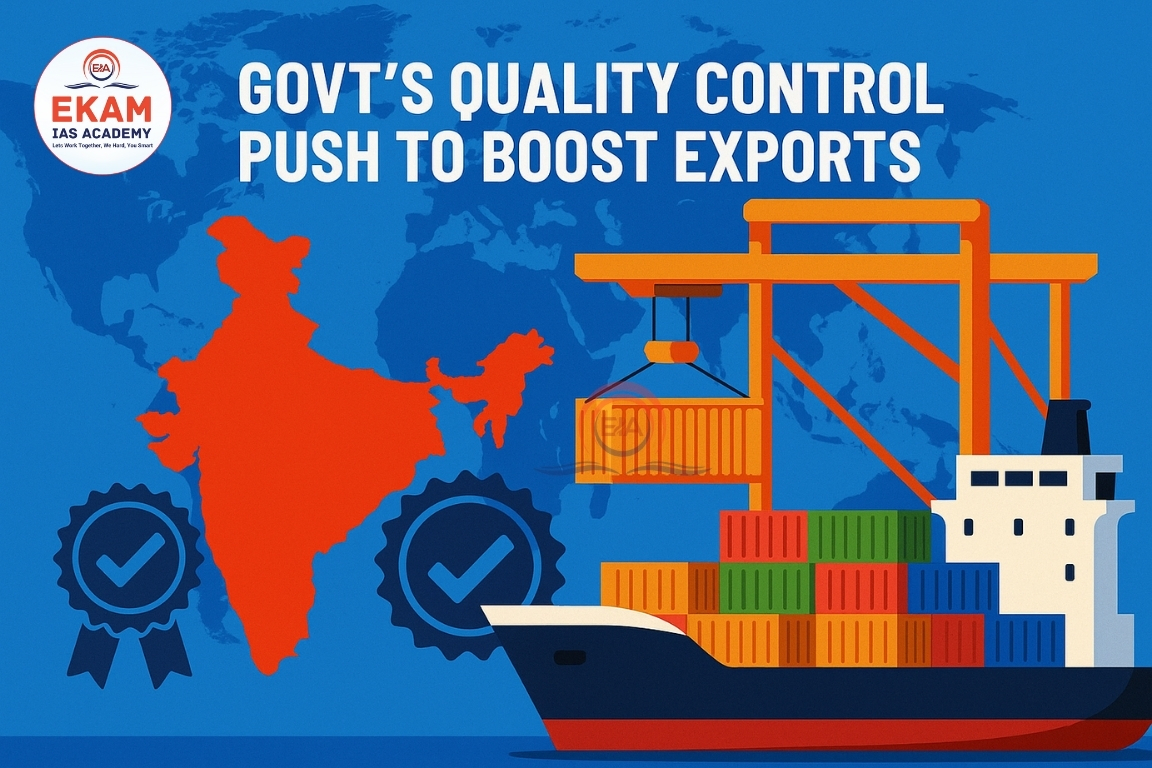The government recently removed the import duty on cotton, triggering protests from farmers while the textile industry welcomed the decision.
Cotton Trade Trends in India
- Cotton has been central to India’s textile sector since Independence.
- Growth phases:
- Post-Partition – Intensive Cotton Production Programme increased domestic output.
- 1970s – Hybrid cotton introduced.
- 1999–2014 – Technology Mission on Cotton improved productivity and quality.
- 2002/2006 onwards – Bt cotton spread widely, especially in western, southern, and northern zones.
- After 2004-05, exports of medium and long-staple cotton rose sharply, driven by international demand.
- Domestic supply expansion reduced earlier reliance on imports and encouraged cotton ginning industries.

Current Concerns: Price Parity and Imports
- Despite progress, imports surged by 77% in 2024-25, even when duties were in place.
- Main reason: domestic cotton is costlier than international prices.
- India’s cotton chain – from farmers to ginners, spinners, mills, and garment exporters – is closely tied to global markets, making it vulnerable to international price swings.
- MSP serves as a floor price, but mills prefer cheaper imports when global prices fall.
- The Cotton Corporation of India (CCI) procures heavily when prices dip; by June 2025, it purchased 34% of production, among the highest in recent years.
Challenges in Domestic Cotton Production
- Falling production and acreage – Cotton area fell by 8.7% in 2024-25 as farmers shifted to paddy, soybean, and groundnut.
- Low productivity – India’s average yield (437 kg/hectare) lags behind the global average (833 kg/hectare), Brazil (1,903), and China (2,257).
- Bt Hybrid Limitations – Over 95% of acreage uses old Bt hybrids, which have lost potency against pests like the pink bollworm.
- Rising cultivation costs – Reduces competitiveness for farmers.
Research and Development Gaps
- Global peers have advanced with Bollgard-III (Brazil, Australia) and CRISPR-based gene editing (China).
- India’s R&D investment in cotton remains among the lowest, limiting innovation.
- Need for public research focus on: Climate-resilient and pest-resistant seeds. Higher lint-to-seed ratio and improved yields.
Way Forward
- Balance farmer and industry needs by strengthening farm-to-firm linkages.
- Increase public investment in cotton R&D to upgrade technology.
- Ensure policies support both farmer incomes and industry competitiveness in global supply chains.
COTTON PLANT:
- Cotton is a fiber-yielding crop and is called “White Gold” in India.
- It grows well in tropical and subtropical regions.
- Needs black soil (regur soil) or alluvial soil with good drainage.
- Requires warm climate with temperature between 21°C to 30°C.
- Rainfall needed: 50–100 cm, but too much rain damages the crop.
- India is one of the largest producers of cotton in the world.
- Cotton belongs to the genus Gossypium.
- The main cotton-producing states in India are Gujarat, Maharashtra, Telangana, Andhra Pradesh, Punjab, Haryana, and Madhya Pradesh.
Conclusion:
Cotton duty cuts reveal the tension between protecting farmers and supporting the textile industry. A long-term solution lies in improving productivity, reducing costs, and investing in innovation to strengthen India’s cotton sector.





